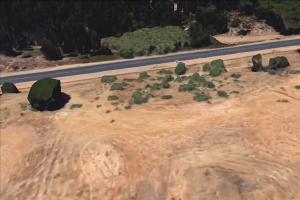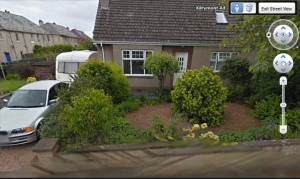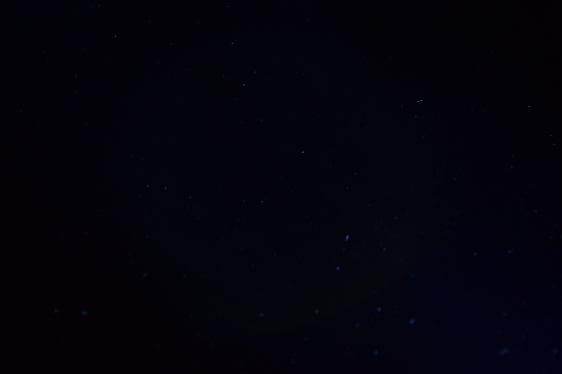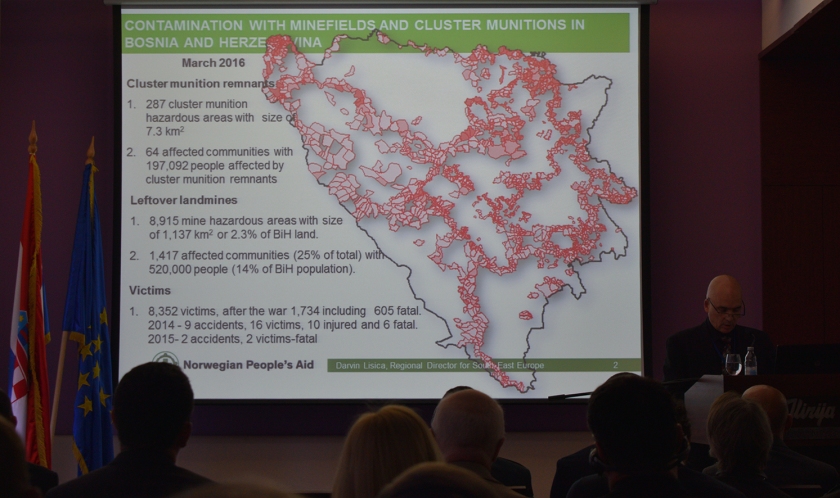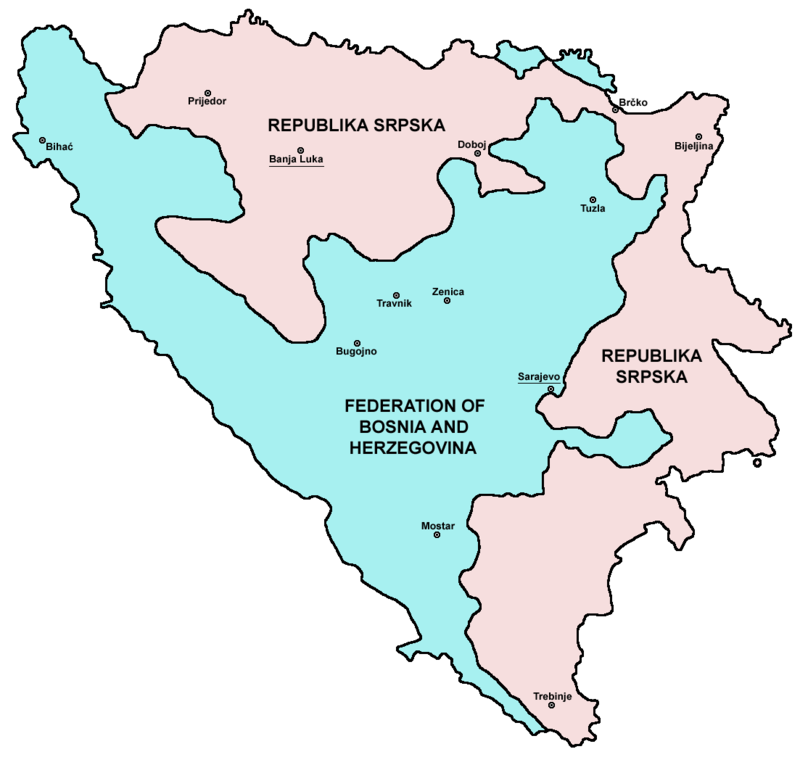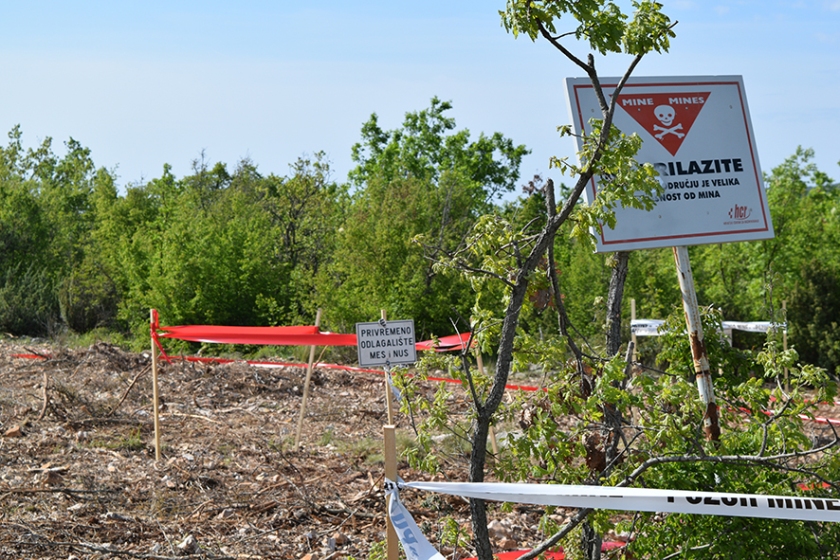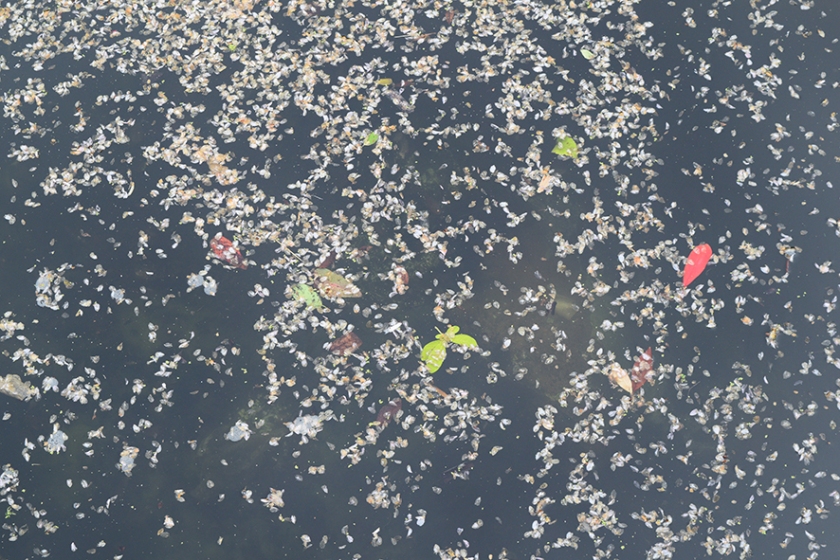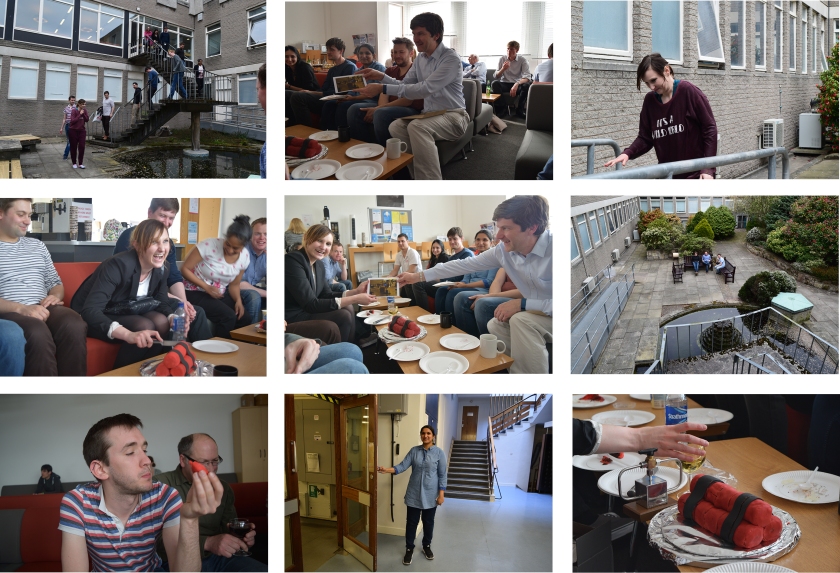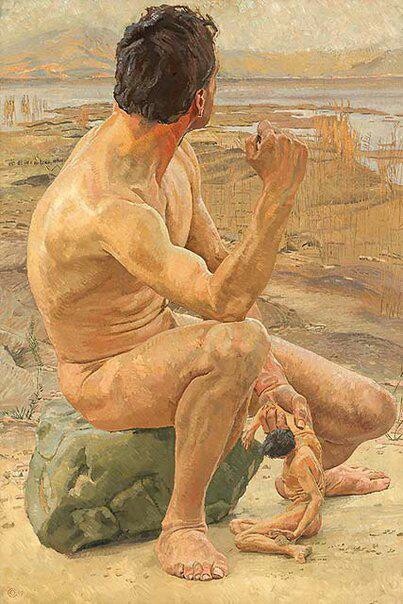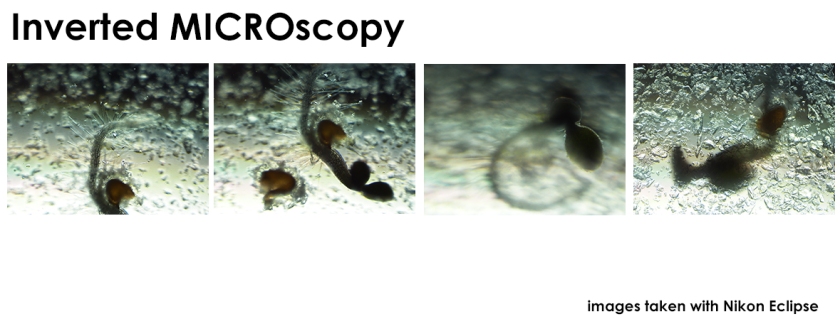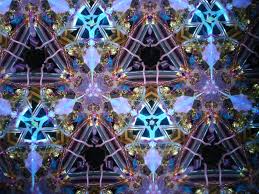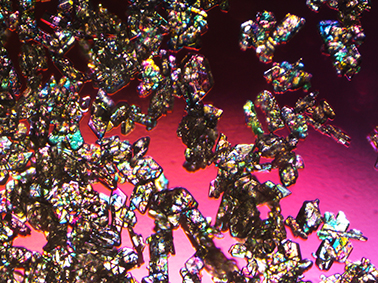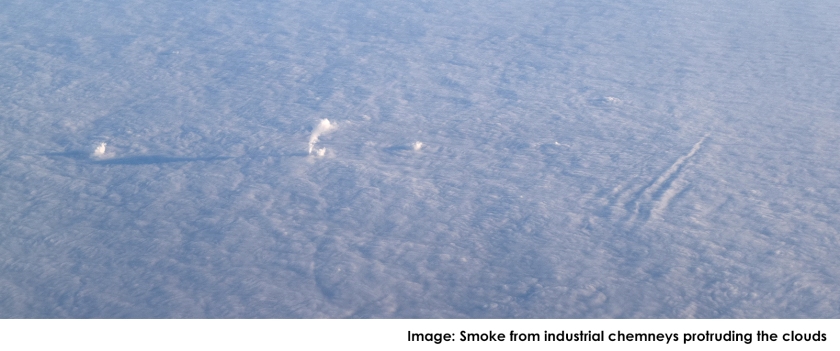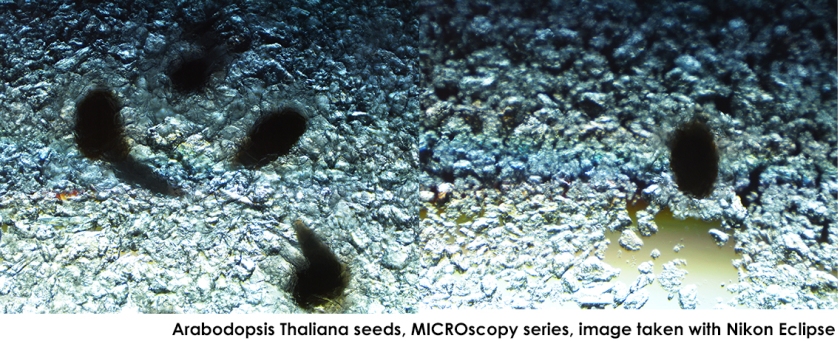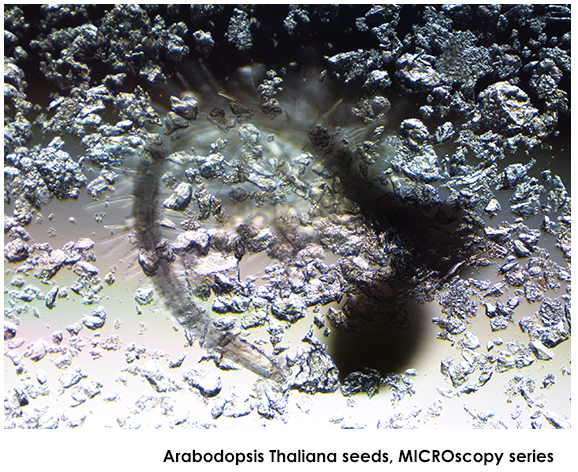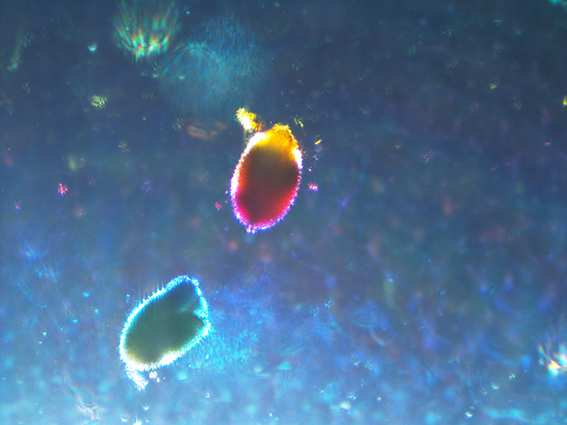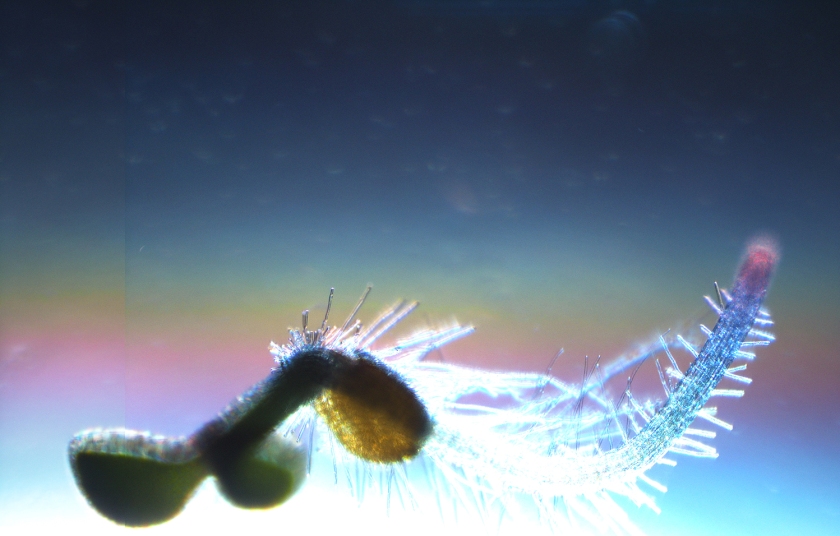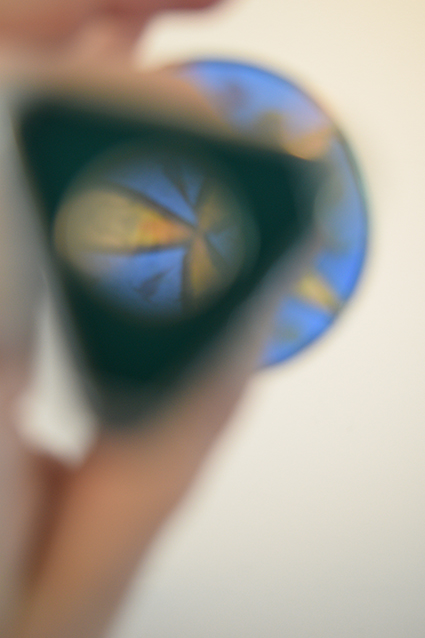
image: Morning Glory, artist Kaori Yokoyama
The visiting exhibition of Japanese kaleidoscopes from the private museum of Mr Shinichi Okuma is a gentle reminder of the differences between the Eastern and Western cultures. There is far more to see here than one could expect from the original kaleidoscope invented by Sir David Brewster in 1816. [1] Its journey to Japan where it was brought by the East India Company for trade was undoubtedly a cultural loop at which returned point decorative art and science meets.
The kaleidoscope we look into is like a flower turned inside out and when rotated its petals shift and rearrange symmetrically in all possible combinations of shapes and colours they contain. One can find themselves staring at a thistle, a daisy or an orchid or even bigger plant: a branch of cherry blossom or a pine tree.
Every kaleidoscope has a different story to tell and the narrative immerses us in memories, nostalgia, dreams, wishes and fairy tales; sometimes these are sad and powerful stories, sometimes sweet moments of everyday life. In a playfully serious way the artists ask provocative questions: Where do dreams come from and why sometimes we have bad dreams, too? What is it like to look at the/from inside of pineapple or a pine tree in a forest, a dream or inside of God(s)?
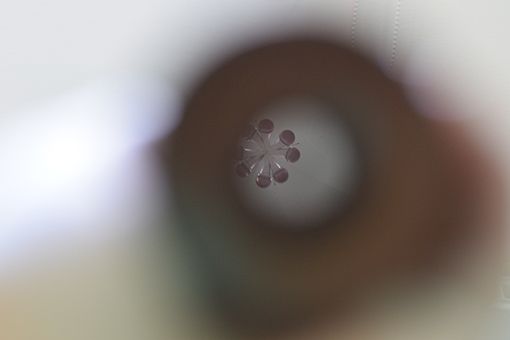
image: Checkmate, artist Michihiro Murakoshi
Besides the well-known equilateral triangle, there exist setups of squares, pyramids, isosceles or scalene triangles and covered or partially covered mirrors that generate more complex and sometimes completely curious patterns. The original kaleidoscope’s set up of two or three mirrors between which a still image is endlessly multiplied to create a six facets symmetry has been decomposed and reconstructed as if it were a secrete text the letters of which have been extracted and new meaningful text has been generated out of the abstract language of optics.
In this moment of privacy, when one visually ‘enters’ into the artists’ world through the eyehole the principle of total inner reflection used in kaleidoscopes ‘tells’ us everything we know or have ever wondered about.
The kaleidoscope has its meaning when one looks inside it and what struck my attention the most was the expression on people’s faces while they were looking into it. From a phenomenological point of view I wonder what are the emotions that touch the seekers in this hidden self-reflected moment. Are we inside or outside of what we experience seeing in this collection and in our relation to the environment and people around us?
From a scientific discovery to a children toy, the idea of the kaleidoscope as a constant repetition of a pattern brings reminiscences of the origin of life. The core image multiplies in the manner of a single cell copying itself in all directions, or replicates as DNA in billions of combinations along the axis of symmetry. Is it the same if I look inside myself or inside of you or inside every other living form?
One thing is for sure, in Japanese culture the kaleidoscope, the name of which means [beautiful form to see], occupies a special place and has been nearly reinvented. Through craftsmanship and the artistic interpretation it has – surpassed long ago the principles of optics and become another world to peep into.
One piece stands out from the rest of the collection. It is a copy of a small garden and a teleidoscope to look at it with and study the surroundings. The teleidoscope works on the same principle as the kaleidoscope but as its name suggests like a telescope it makes distant objects appear near. It has a lens at its end and instead of showing inner details it opens the scope of the viewer to the outside world. Looking through it the garden gained another dimension. Structural colours from butterfly’s wings and chitin of beetles breaks into a blue and green palette. After this turning point I really wanted to go out and look and see more, in a new way.
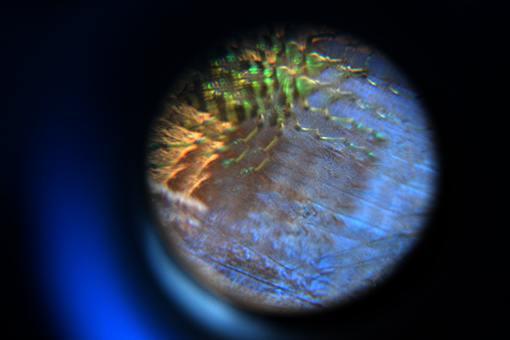
image: Insect Kaleidoscope, artist Kyouko Kuno
At the last day of the exhibition I asked Mr Okuma what the kaleidoscope means to him.
The answer came as a surprise to me from a man who works with archives and collections, or probably just because of this, and after a short reflection he said: ‘Kaleidoscope is to look at life now, like there is no past or future, Carpe diem’.
[1] https://brewstersociety.com/kaleidoscope-university/kaleidoscope-history-in-japan/
KALEIDOSCOPE II
To my set up under the microscopic I added two cross polariser sheets which triggered the birefringence effect of the crystals with asymmetrical crystal structure such as the DMDNB. Birefringence is the optical property of a material having a refractive index that depends on the polarization and propagation direction of light
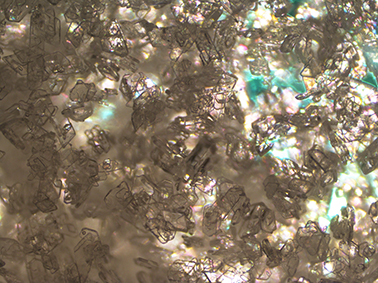
image: DMDNB crystals under inverted microscope, 2016
The configuration of the crystals under the lens of the microscope shows different colours when one of the polariser sheets is rotated in an angle in relation to the other. Birefringence is responsible for the phenomenon of double refraction whereby a ray of light, when incident upon a birefringent material, is split by polarization into two rays taking slightly different paths.
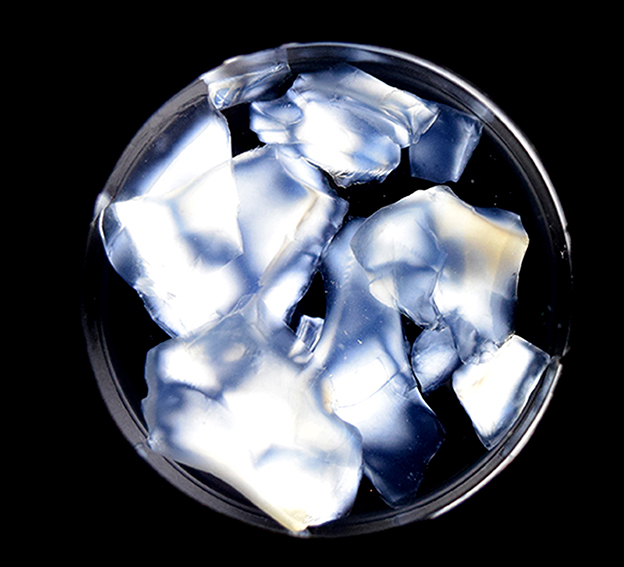
image: Twisted Beauty, silica based aerogel, 2015
The following video ‘A new error’ artist MODERAT is based on kaleidoscope imaging
https://www.youtube.com/watch?v=1J9l3O1jmrg

